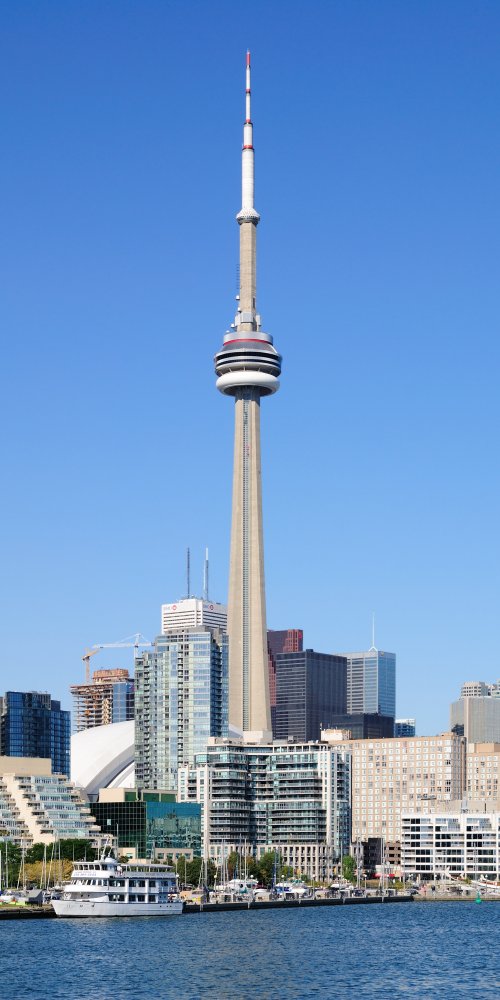

Step onto the bustling platforms of Toronto’s Union Station and you're instantly submerged in a symphony of sounds that define this vibrant city. The sharp beep of ticket barriers welcomes you in, while the melodic chime of trams threading along Queen Street punctuate the air. Conversations weave through at least half a dozen languages, each snippet a glimpse into Toronto’s rich multicultural tapestry. The rhythmic hum of buses rolling past, the splash from nearby ferry docks, and the swift pedal strokes from bike-share riders layer into an urban orchestra. Whether you're a commuter or a visitor, the tempo of Toronto’s public transport sets the pace for discovery, connecting neighbourhoods and stories with effortless ease.
If you’ve ever tried navigating downtown Toronto by car during rush hour, you’ll appreciate just how vital the city’s public transport network is. Metro Toronto, ON, CA thrives on its integration of modes that aren’t just cost-effective but also time-efficient. A single journey on the subway or a tram buzzes past congested streets, whisking you across the city faster than any cab during weekday peaks. For visitors looking to stretch their budgets, public transport slashes travel costs significantly compared to taxis or ride-shares. When I first climbed the CN Tower, the seamless trip on the Yonge-University line proved so smooth that I vowed never to drive downtown again - and with single tickets costing just CAD $3.35 and contactless options, it’s easy to justify ditching the car.
Using public transport is also a greener choice - every ride on a bus or tram reduces the carbon footprint, helping Toronto maintain its commitment to sustainability. Plus, the transit system connects you to scenic ferry rides to the Toronto Islands, serene bike-share paths, and distinctive neighbourhoods like Kensington Market or the Distillery District.
In essence, public transport in Toronto, ON, CA offers speed, savings, and a slice of local life - all wrapped into one urban journey.
| Mode | Lines | Peak Frequency | Night Service |
|---|---|---|---|
| Metro (Subway) | 4 lines (Line 1, 2, 3, 4) | Every 2-4 mins | Limited overnight bus substitution |
| Tram (Streetcar) | 11 routes | Every 5-10 mins | Some routes 24/7 (e.g. 501 Queen Streetcar) |
| Bus | 144 routes | Every 5-15 mins (peak) | Bus Night Network operates 24/7 |
| Ferry | 1 main ferry to Toronto Islands | Departures approx. every 30 mins | Not operating overnight |
| Bike-Share | 600+ stations | Available 24/7 | Accessible anytime |
The public transport network in Toronto, ON, CA is thoughtfully designed to cater to a variety of travel preferences. The frequent metro lines provide fast north-south and east-west connectivity, ideal for commuters and tourists alike. The iconic trams are more than just nostalgia: they form lifelines along major corridors, hop between landmarks, and let riders soak in city life at street level - perfect when you want to explore the neighbourhood vibe. Meanwhile, buses fill the gaps, stretching out to suburbs and night routes. With seamless transfers allowed on single fares, the fare integration encourages you to combine metro Toronto, ON, CA lines with bus or tram routes Toronto, ON, CA offers without fuss.
Peak hours in Toronto’s public transport are typically weekdays from 6:30 to 9:30 AM and 3:30 to 6:30 PM. During these times, trains and trams fill up fast, so you should anticipate standing room only, especially on Lines 1 and 2. If you’re commuting or visiting popular destinations like the Entertainment District, leave a little earlier to ensure a stress-free journey.
The good news is that TTC maintains more frequent services during peaks, slashing wait times. But be mindful that ticket validation rules and fare caps remain the same regardless of time.
Off-peak travel is your best bet if you prefer spacious vehicles and quieter stops. After 9:30 AM until late afternoon, and post-evening rush until close to midnight, public transport in Toronto, ON, CA feels like a personal carriage - ideal for leisurely sightseeing or remote working in transit-friendly cafés.
Night Owl riders will appreciate the TTC’s Night Network bus routes that operate 24/7 on key corridors, some overlapping tram routes Toronto, ON, CA hosts.

Toronto’s metro and buses are increasingly accessible, with low-floor vehicles and designated spaces. The newer streetcars feature wheelchair ramps, but some heritage trams remain challenging. Plan routes ahead via the TTC accessibility tool for smooth transfers.
Strollers fold quickly for streetcar rides; elevators at major stations help with manoeuvring. Busy stops may require holding prams close during peak periods.
Travelling with large luggage is manageable on Line 1 towards Pearson Airport. During peak times, board at less crowded stations when possible and use elevators to avoid stairs.
Bus tickets are best purchased via PRESTO cards or mobile apps before boarding. Drivers usually do not accept cash except on select routes; exact fare is required.
Absolutely! Tram routes like 501 Queen provide scenic, street-level views of cultural and historic spots, allowing you to soak in local life as you travel.
Passes offer unlimited travel within their validity, saving money for frequent travellers and tourists. They eliminate ticket queues and provide convenience with contactless payments.
Use the Night Network buses that run 24/7 on major routes, and check schedule updates carefully. Some streetcars also offer late-night service.
I hope this guide inspires you to embrace the energy and ease of public transport in Toronto, ON, CA. Whether you’re hopping on a tram for the first time or hunting down the best transport passes Toronto, ON, CA offers, you’re now ready to explore with confidence. Share your own travel tales and tips in the comments below, and don’t forget to sign up for our newsletter for fresh guides and insider secrets.
Additional articles from our network with useful insights about Toronto.